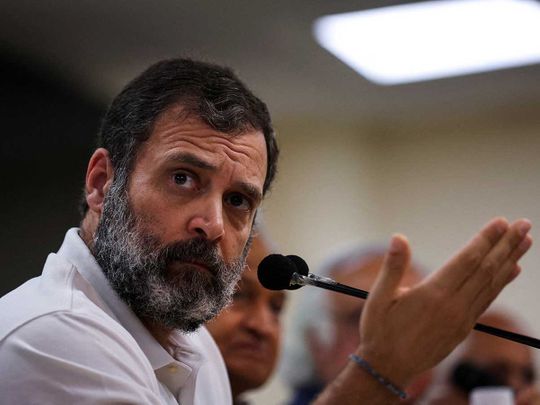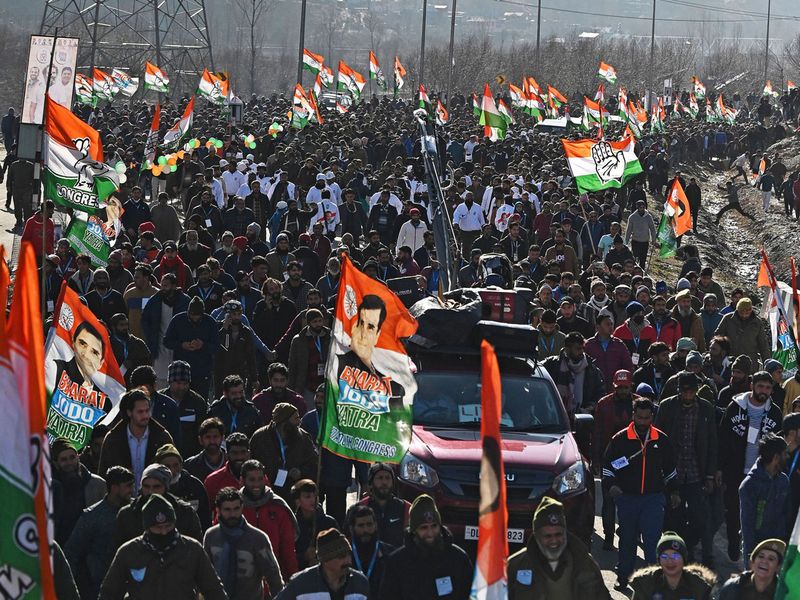
As Karnataka Congress leaders Siddaramaiah and DK Shivakumar were flying to Delhi for negotiations over who gets to be chief minister, Sonia Gandhi and Priyanka Gandhi were already in Shimla. Rahul Gandhi was in Delhi.
The negotiations were held with Congress president Mallikarjun Kharge, former president Rahul Gandhi, and Gandhi’s powerful aide KC Venugopal, who is Congress general secretary (organisation).
Rahul Gandhi may not have any post in the party, and is no longer even a member of parliament, but the symbolism of his mother and sister not being in Delhi at a critical time makes it clear who the boss is.
Rahul Gandhi’s favourite in Karnataka, Siddarmiah, was made chief minister. This was in contrast to 2018, when Rahul Gandhi’s choices for Madhya Pradesh and Rajasthan were over-ruled by Ahmed Patel and Sonia Gandhi.
A leader close to Rahul Gandhi told me in 2019 that Gandhi resigned as party president partly because he said what was the point being president if he couldn’t even decide who’ll be chief minister after the party wins a state.
Change of guard
When Rahul Gandhi resigned from the Congress president’s post in 2019, he demanded a non-Gandhi to be party president, meaning that he wanted his mother or sister to not be president either.
As long as Sonia Gandhi’s powerful political secretary Ahmed Patel was alive, he ensured Mrs Gandhi was ‘interim’ president. Patel died of Covid, and since then the resistance to Rahul Gandhi from the ‘old guard’ has virtually disappeared.
Rahul Gandhi had his way with a non-Gandhi president in Mallikarjun Kharge, giving Rahul power without responsibility. He can now take credit for success and blame Kharge for failure. With Kharge’s elevation, the so-called “G23” rebel grouping is all but dead.
It’s not as if there is any pretence in the party that Rahul Gandhi is not their leader, because the Congress party’s biggest mass contact programme in decades, the Bharat Jodo Yatra, was led by Rahul Gandhi.

A ripe opportunity
We are enthusiastically told by Congress supporters that the Bharat Jodo Yatra has made Rahul Gandhi a popular mass leader and revived the Congress party’s fortunes. This is partially true, because at least among non-BJP voters his image has improved, for the moment. This has helped him silence anxious critics within the party.
If Rahul Gandhi has strengthened his hold within the Congress, the scenario outside is also looking better than it did after the party lost the 2019 general elections under his leadership.
Prime Minister Narendra Modi’s popularity ratings remain far ahead of Rahul Gandhi’s. At the same time, Himachal Pradesh and Karnataka have shown that the standard rules of ‘anti-incumbency’ still apply to Indian politics.
Like 2004 or 2014 or 2018, it remains the case that ruling parties can be defeated in elections by tapping into economic discontent. Inequality has increased in post-Covid India, the rich have become richer and the poor have become poorer.
In December 2023, the Bhartiya Janata Party is not going to have a cakewalk in the assembly elections of Telangana, Madhya Pradesh, Rajasthan and Chhattisgarh.
The defeats in Himachal and Karnataka, and before that in West Bengal and Delhi, and the challenges mounted by regional parties in Bihar and Maharashtra, all of these have blunted the BJP’s image of invincibility.
There is by now ample evidence that the BJP can be defeated despite having an edge in media capture, social media reach, party organisation, and the use of central agencies. All of this suggests that the road ahead for Rahul Gandhi is clear. He should have no excuses now.
At least 100 seats?
Of course, Prime Minister Narendra Modi will most likely address economic discontent with new welfare measures latest by the first week of February 2024, if not before.
He will address the pain points such as high prices of fuel and gas cylinder refills. Given his popularity, a fresh new energy in welfare schemes should be enough to see him through in 2024.
Nobody expects Rahul Gandhi to be prime minister of India in a year from now. The question is one of the seats and vote share. Can Rahul Gandhi show even incremental improvement? Can he take back the family pocket borough of Amethi?
The Congress party’s vote-share remained the same -- 19 odd per cent -- in 2014 and 2019. Its seats increased from 44 to 52 in a legislature of 543. On a plurality of Lok Sabha seats, the contest even today is BJP versus Congress. The Aam Aadmi Party, and third front formation or any new entrants haven’t really taken off.
Rahul Gandhi’s last chance
This is Rahul Gandhi’s best opportunity — as well as his last chance. It’s now or never.
Rahul Gandhi did not campaign in Himachal Pradesh elections presuming the Congress would lose, why take the blame? As it happens, the Congress won and Priyanka Gandhi got credit. In Karnataka both the siblings campaigned but credit went to the two state leaders, Siddaramaiah and DK Shivakumar.
In 2024 Rahul Gandhi will have to demonstrate that his leadership can bring votes if not victory.
If Rahul Gandhi can’t even take the party to 100 plus seats in 2019, the ‘Priyanka lao Congress bachao’ (Bring Priyanka, save Congress) lobby in the party is going to grow louder. Over-the-top photo ops between the siblings won’t be enough to send the party rank and file the message of unity.
If Rahul Gandhi can’t deliver in 2024, even his own party will give up on him for good. The ball is in his court.









